Easy Explainer: How to home school a child in Australia
This is a step-by-step guide to show how any parent can home school their child from Prep up to Year 9. Experts say there are some simple tricks you can follow to get started.
Hibernation
Don't miss out on the headlines from Hibernation. Followed categories will be added to My News.
Learning from home is a significant shift to make, for both students and parents. But experts say there are some simple tricks you can follow to help set a routine.
Karen Green, Curriculum expert and co-founder of MAPPEN, said children have multiple triggers that set them up in preparation for learning.
“Just getting dressed in a school uniform, travelling to school and getting the roll called are all unconscious prompts that learning is about to begin,” she said.
“Likewise, there are many indicators that come at the end of a school day when they go home, that they can have a break from the routines they follow at school. At home they can change out of their school uniform, spend time with their family and play. “
With the shift to learning from home, parents can set up triggers that fit a new home based routine such as a strategy to announce that school has started such as putting on a school uniform, having a bell, ensuring learning time is regularly punctuated by movement and having a clear end of the school day.
Ms Green warned it might take some time for families to settle into a routine and that it can be valuable to work on a schedule together.
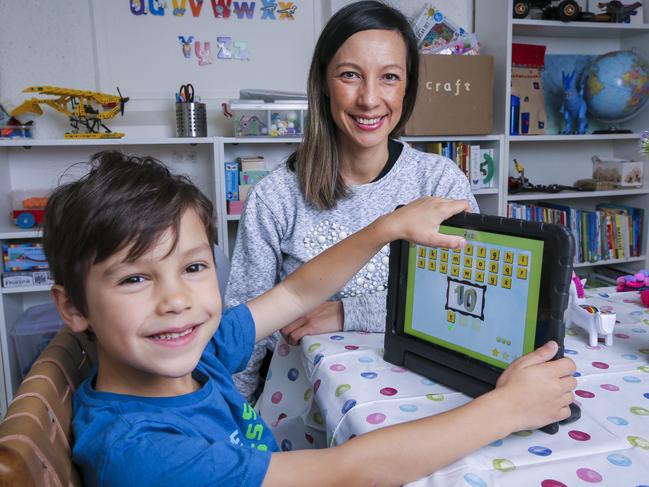
“If things get off to a rocky start, that’s OK! Give yourselves some time. It takes many months and specific transition programs for students to learn the routines when they first start attending school, it will take time for them to adjust to home learning too.”
Charles Stuart University’s Dr Rachael Jefferson-Buchanan, Specialist Physical Education and Special Educational Needs, said daily routines can be good for young children but for parents to be prepared to be flexible.
“We are dynamic human beings with many moods and personal needs. Parents should be facilitating learning activities based on the child’s strengths, interests and needs – rigid routines are not needed.
“This could a rich and dynamic opportunity. Parents also need to be kind to themselves and take on a ‘different’ mum-teacher, dad-teacher role – they can never replace the ‘real’ teacher so they should allow themselves to be creative with their ‘new’ role. They can introduce regular learning through play possibilities, outdoor learning, multi-sensory learning that is cross-curricular in nature, and more besides.”
PREP to YEAR 2
9am
TASK 1: LITERACY – SUMMARISING
Approx: 30 mins
Note to Parents/Guardians: Many children will already be familiar with the picture story book ‘We’re going on a Bear hunt’ by Michael Rosen and Helen Oxenbury. If you do not have a copy of this book you can find a reading of it here
You will need:
– A copy of ‘We’re going on a bear hunt’ written by Michael Rosen and Helen Oxenbury or access to the you tube clip as above
Activity:
Read the book or listen to the story. Discuss what it was about and some of the events that happened in the story. Do you think the characters were brave? Would you go on a Bear Hunt with them?
Pretend you are going to tell someone, who hasn’t heard this story, what it is about, but your pen only has enough ink left (or pencil is only sharp enough) to write 30 more words.
Choose the most important points of the story and write a sentence or short paragraph about this story before your pen runs out. (For Foundation/Prep students, parents can help to write some of the words, allowing children to write familiar words themselves.)
An example of a summary could be;
The family went on a bear hunt. It was a difficult trip. They found a bear but got scared so they ran home.
Draw a picture to go with your writing.
Curriculum Links: English – Literature – Responding to Literature
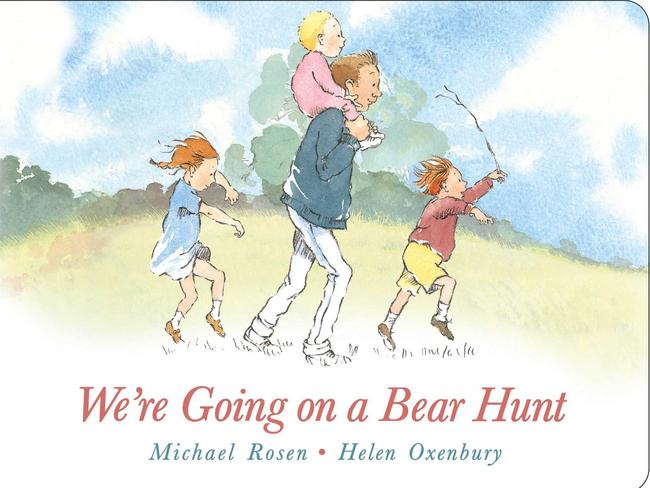
9.30am
TASK 2: LITERACY – PHONICS
Approx: 45 mins
Activity 1:
You will need:
-2 copies of the Scavenger Hunt Grid (fold a piece of paper into thirds length ways and quarters long ways to give you 12 squares).
Alphabet Scavenger Hunt
Choose 12 letters of the alphabet and write them in the grid
Allow your children to help choose some letters. Select a few they are confident with knowing the sound/s for and a few they need some work on. Revise the sound or sounds that each letter can make before beginning.
Give your child 5 minutes to search the house and find something that begins with each letter on their grid. They can collect it, draw it or Year 1 and 2 students could write it.
Repeat the activity but this time send them outside to find things for each letter.
Activity 2:
You will need:
-game board (make sure you copy the gameboard suited to your child’s ability)
-cards with consonants and diagraphs. These can be printed on paper or card and cut out.
Foundation/Prep:
Have your gameboard and the pile of letter cards in front of you.
Turn over a letter from the pile and see if you can use it to make a word on your gameboard. If you can use it, write it in position on the sheet, if not, return it to the discard pile and try the next letter. Read your list of words aloud.
(For eg. ‘b’ can be added to ‘in’ to make ‘bin’). Can you use each word in a sentence?
Years 1 and 2:
Have your gameboard and the pile of letter/diagraph cards placed face down in front of you. Turn over a card and see if you can use it to make a word on your game board. Write it in any position you like on the sheet. Remember, you need to be able to make a proper word so think carefully about where you place the letter. (For eg. ‘b’ and ‘d’ can be used with the ‘a’ to make bad, ‘sh’ and ‘p’ can be added to ‘ee’ to make ‘sheep’). Place your used cards face down in a discard pile (you may need them again). Continue turning over letters/diagraphs until you have filled in your gameboard. You may need to go through your cards a second time to fill all the spaces. Read your list of words aloud. Can you use each word in a sentence?
Curriculum Links: English – Language – Phonics and Word Knowledge
10.15am, BREAK: 30 minutes
10.45am TASK 3: MATHEMATICS – SUBTRACTION
Approx: 20 mins
Note to Parents/Guardians:
Subtraction involves ‘taking away’ or finding the ‘difference between’ two amounts.
You will need:
-set of skittles (or empty and cleaned soft drink bottles)
-small ball (suitable for indoor rolling)
-hallway or other safe space to roll a ball (an outside area would be great).
Mental Warm Up:
Foundation/Prep to Year 2: Let’s get your brain ready for some number work!
Play a game of ‘Simon Says’ (or whichever name you like – ‘Mum/Dad says …’ could also work) where ‘Simon’ says an action and a number. You then have to complete the action given that number of times.
For eg. Simon says … hop 4 times, Simon says … jump 12 times etc.
Simon might try to trick you and say clap 0 times. Listen carefully so you are not tricked. If you do the action when the number is 0 you are out.
Swap roles, can you trick your parent or a sibling?
Years 1 and 2: Simon could be super tricky and say things like ‘Clap 7 plus 2 times.’ You then have to solve the problem before you do the action.
Foundation/Prep Year 1 & 2
Activity: Skittles
The aim is to get the lowest number.
Set up 6 (or 10 for Years 1 and 2) skittles at the end of the hallway in the pattern of the diagram. Allow your child to count the skittles so they know how many are there.
From a distance (suitable for your child’s ability) roll the ball trying to knock over the skittles.
How many did you knock over? How many are left?
Encourage your child to say the subtraction problem they have completed. ‘There were 6 skittles, I knocked over 2, now there are 4’. Repeat this several times.
Record some of your subtraction problems either as a sentence and number sentence. (I had 6 and knocked 2 over. I now have 4, or 10-6=4)

Extension:
For Year 2 students, each skittle could be worth 2 points. Your child then has to say ‘I had 20 points (not skittles), I knocked over 4 skittles which is 8 points. I know have 12 points’.
They may need to count by 2s to work out the number of points they have ‘knocked over’.
Curriculum Links: Mathematics-Number & Algebra – Number and Place Value

11.05am, TASK 4: WELLBEING- FEELING LONELY
Approx: 30 mins
Note to Parents/Guardians:
Many children will be feeling lonely at the moment, isolated from friends and family for an unknown length of time. It is normal to feel lonely, especially with all that is going on at the moment. Acknowledging their feelings and talking through the situation so they know they are not alone will help. However, if you feel your child needs additional support you can contact Kids HelpLine 1800 55 1800
You will need:
-access to the story ‘When I’m feeling Lonely’ by Trace Moroney. If you do not have a copy there is a clip of the story being read on YouTube here
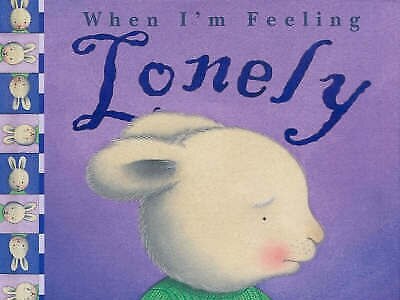
Activity:
Listen to the story ‘When I’m Feeling Lonely’, by Trace Moroney.
Discuss the things that made the main character feel lonely and what they did to help themselves feel better.
Check in with your feelings. Are you feeling a little (or a lot) lonely at the moment? What is making you feel lonely? Who are you missing? Can you use one of the ideas in the book to help you feel better? What else might help you?
If you are not feeling lonely, think about those in the community who might be feeling lonely at the moment.
Extension:
Think of a small act of kindness you could do to help someone in your household or community feel less lonely or isolated. Some suggestions include; bake a treat for a neighbour and leave it on their doorstep, allow your parent some uninterrupted time to call a friend or relative, write a note/card for a friend and drop it in their letterbox, send a photo or video message to a family member letting you know that you are thinking of them, paint some rocks/pebbles with an uplifting message that you can leave at various places when you go out for a walk/ride with your family so that others can find them.
Curriculum Links: Personal and Social Capability – Social Awareness
11.35am, LUNCH: 60 minutes
-Do some ‘doodling’. On a blank sheet of paper – just start drawing. Doodles are simple drawings that may have meaning or may just be random lines, shapes or patterns. You don’t have to have an idea of what you are going to draw – just pick up a pencil or marker and start. See what you can create.
-Complete a puzzle
-Complete a dot-to-dot – you may have a book of dot-to-dot pictures or you can download some free dot-to-dot pictures from the internet. Extra challenge – can you create your own dot-to-dot picture for someone else to do?

12.40pm, TASK 5: THE ARTS – DRAMA: ACT IT OUT!
Approx: 30 mins
Being creative helps to cure boredom and using drama is another way to be creative. This activity will work better if there are a few people to join in – it is suitable for any age so get the whole family involved!
You will need: an imagination and sense of fun
Activity:
Take it in turns to silently act out different actions for other members of the family to guess.
You can act out anything you like but must be able to use your body and facial expressions to communicate your idea without your voice. You can act out animals, activities, sports, chores, TV characters, book/movie title or scene.
Some ideas with a bit of a twist include;
-an animal doing something unusual (a snake going down a slide)
-a nursery rhyme character (itsy bitsy spider climbing the water spout)
-someone playing two sports at once (playing football and doing ballet)
-someone doing a job with a problem (a gardener who jumps everywhere)
-an everyday action with a difference (someone cleaning their teeth while having a cup of tea)
Curriculum Links: The Arts – Drama
1.10pm, BREAK: 30 minutes
1.40pm, TASK 6: HEALTH & PHYSICAL ACTIVITY – 5min MOVES
Approx: 30 mins
Note to Parents/Guardians:
You may be able to link your internet up to your television screen so it is easier to see while exercising.
Younger children will need help to work the stop watch/timer.
You will need:
-access to the internet where you can watch the You tube clip while exercising. You can find the clip here
-a stop watch
Activity:
Watch and follow the You tube clip ‘5-minute moves featuring Betsy’ on The Body Coach TV.
Complete the activities, listening carefully to his instructions.
How do you feel straight after completing the work out? After 5 minutes?
Can you create your own 5 minutes of exercise for your family to follow? Go outside or into a quiet space and practice, explaining your action while doing them.
When you are ready, call your family together and run a session for them.
Curriculum Links: Health and Physical Education – Movement and Physical activity – Understanding Movement

YEARS 3-4
9am, TASK 1: LITERACY – BOOK REPORT
Approx: 60 mins
Note to Parents/Guardians:
To complete a book report, your child obviously has to have read a book. If the one they are currently reading still has awhile to go, they could choose a book they read recently or in class.
Activity:
Firstly, read for a sustained period of 20 minutes.
You are going to complete a book report on a book you’ve recently read or listened to. It could be the one you’re currently reading if you are almost at the end. A book report is an informational essay giving an objective point of view on the text, it’s not just your personal opinion.
Once you’ve read the book, follow the book report pro-forma below on a separate sheet of paper or on your computer:
Title: Book Report
Title of book:
Author:
Characters (with a short description of each):
Setting/s (where and when the story takes place):
Conflict:
Resolution:
Analysis (insights into characters, theme, setting):
Conclusion (summarise the resolution and would you recommend this book?):
Curriculum Links: English – Literacy – Interpreting, analysing and evaluating
10am, TASK 2: LITERACY – WRITING FOR REAL LIFE
Approx: 45 mins
Note to Parents/Guardians:
This activity aims to show children the value of being able to write a variety of texts for different purposes and audiences, especially in real world situations.
Activity:
To be a good writer requires you to be able to write for a range of different audiences and purposes.
There’s an opportunity to practise this while being home from school. Choose 3 of the activities from the Real Life writing grid below to complete.
These will helpfully show you how purposeful writing can be in real-life situations and to help get things organised and done.
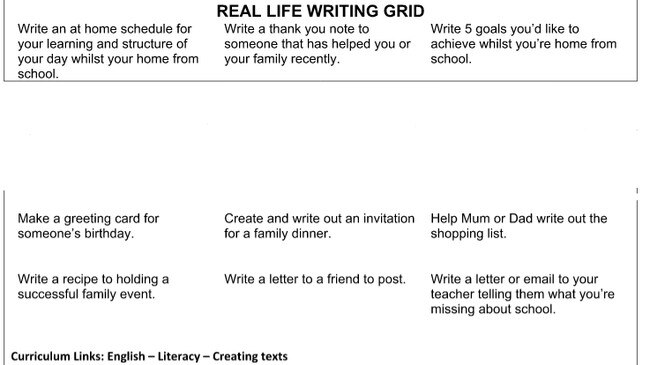
Curriculum Links: English – Literacy – Creating texts
10.45am, BREAK: 30 minutes
11.15am, TASK 3: MATHEMATICS – ORIGAMI SHOOTING STARS
Approx: 45 mins
You will need:
-2 square sheets of paper per star
-Ruler or measuring tape
-Pencil and scrap paper
-Tape for the easier version
-Print or view instructions here
Activity:
In this activity, you’ll fold origami paper stars and see how far they fly.
There is a step-by-step YouTube video on how to make the star as well as step by step written instructions with diagrams found here
To view the YouTube video go here
(Source: Bedtime Math Foundation)
Once you’ve made your paper star have a throwing contest with your family.
-Line up along a line
-Throw your stars
-Measure the distance of your throw
-Record the distance of 3 throws each and see who in the family gets the furthest throw
Extension:
Times tables: Students to listen, read or write out times tables for 10 minutes.
Curriculum Links: Mathematics – Measurement and Geometry – Shape and transformation
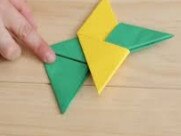
12pm, TASK 4: SCIENCE – TAWNY FROGMOUTH
Approx: 30 mins
Note to Parents/Guardians:
The daily educational videos from the Australian Reptile Park are streamed at 10am each day on their YouTube channel
They also do a 2pm live stream on their Facebook and Instagram accounts.
Activity:
Watch the 5-minute educational video on the Tawny Frogmouth and write down as many facts as you can while watching the clip. Re-watch if you need to.
Complete a fact file on the Tawny Frogmouth on an A4 piece of paper. Decorate it with a nice border, heading and then include at least 10 interesting facts that you learnt from the educational video from the Australian Reptile Park. Make it interesting enough that other people would like to read.
What other animals would you like to see featured in this series?
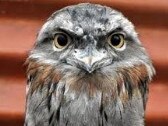
Curriculum Links: Science – Science Understanding – Biological sciences
12.30pm, LUNCH: 60 minutes
-Clean out animal cages or bedding
-Give your pet a bath
-Tidy your room
-Clean up any rubbish down your driveway or around your fence lines
1.30pm, TASK 5: COOKING – EASTER BISCUITS
Approx: 25 mins
Note to Parents/Guardians:
Children should be able to do this quite independently and might be good to set-up outside to save the mess!
You will need:
-Milk Arrowroot biscuits
-Sprinkles or lollies to decorate
-1 cup icing sugar
-1 tablespoon milk
-Food colouring
-Piping bag if your Mum or Dad has one
Activity:
This is a simple and fun Easter idea to decorate biscuits to look like Easter eggs.
Follow this procedure to make your Easter egg biscuits;
-Mix icing sugar and milk together in a bowl
-Separate icing into smaller sized bowls and add food colouring
-Using a non-sharp knife, spread the icing on the biscuits and decorate with sprinkles, lollies and different colour icing sugar to do lines and squiggles.
-Set in the fridge
-Store in an airtight container for three days.
Curriculum Links: Mathematics – Measurement and Geometry – Using units of measurements

2pm, BREAK: 30 minutes
2.30pm, TASK 6: HEALTH AND PHYSICAL EDUCATION
Approx: 30 mins
Note to Parents/Guardians:
This is a great circuit of exercises for your child or the whole family to build upon their own strength.
Activity:
These exercises use your own body weight to help you build strength which is very important as you grow and build strength and fitness.
Repeat this set of exercises twice a couple of times a week to help build your strength.
Keep a record of how many you do of each exercise so you can see your improvement over time (however it’s not about how many you do of each exercise, more about doing each one properly to get the full benefit).
1. Bench step-ups: Step right foot, then left, up onto a low bench, then step down. Switch your starting side with each set.
2. Burpees: From standing, squat down, place your hands on the ground, and jump your feet back into a plank position. Lower body to the floor for a push-up. Push back up to plank. Hop feet back in and stand up.
3. Calf raises: From standing, lift up onto your tiptoes and hold, then lower.
4. Cartwheels: A blast! If anyone can’t pull them off, just try to approximate the move.
5. Crab walks: Sit with your knees bent and feet flat on the ground; place palms on the ground behind you. Lift hips a few inches and walk forward on your hands and feet like a crab, then walk backward.
6. Crab toe touches: From your crab position, lift left leg and right arm and try to touch your toes. Lower and repeat on the other side.
7. Handstands against a wall: Make it a game and see who can hold it the longest.
8. Hip bridges: Lie on your back with knees bent and feet flat on the ground; rest arms by sides. Press feet firmly down as you slowly lift your hips off the ground; hold for a few counts, then lower.
9. Inchworms: Bend forward at the hips and place hands on the ground with knees slightly bent, then walk them forward until you’re in a plank position. Now walk feet in to meet your hands and stand back up.
10. Planks: Lie on the ground on your belly, chest lifted off ground. Flex your feet (toes on the floor), engage legs, and lift body up, balancing on forearms and toes. Keep entire body strong and butt in line with shoulders and heels. Hold.
11. Push-ups: Get into position and bend elbows and lower chest toward the ground, then push back up.
12. Side leg raises: Lie on one side, with your feet and hips stacked; prop yourself up on your forearm. Align shoulder over elbow. Lift your top leg straight up, keeping foot parallel with the ground and flexing your toes; pause at top, then lower.
13. Side planks: Lie on one side and prop yourself up on your forearm. Stack your feet and hips. Lift hips straight off the ground. Hold. Repeat on the opposite side.
14. Squat jumps: Stand with your feet hip-width apart, bend your knees, and squat your butt back and down, then jump straight up in the air, and land back down in the squat with knees bent.
15. Straight-arm planks with arm row: Get into a push-up position, with feet slightly wider than hip-width. Hold it while you bend right elbow and lift it straight up, bringing hand up by side. Lower hand and repeat on the other side.
16. Supermans: Lie face down, with your arms and legs extended. Slowly lift your arms and legs off the ground as high as you can; keep the neck relaxed and look down at the ground. Hold, then lower.
(Source: parents.com)

YEARS 5-6
9am, TASK 1: LITERACY – NON-FICTION TEXTS
Approx: 45 mins
Note to Parents/Guardians:
Students will require some examples of non-fiction texts. These could include physical books and/or online examples such as encyclopedias, newspapers, animal information books, instruction manuals, travel guides, recipe books.
Activity:
Non-fiction texts include factual information. They help us to learn things. They are often structured differently to fiction texts and contain a variety of features designed to make the information easier to find and understand.
Work with your adult to see if you can find examples of each of these text features in the non-fiction texts you have gathered. Discuss why each feature is helpful.
-Headings
-Sub-headings
-Photographs / realistic illustrations
-Captions
-Maps
-Bold print or italics
-Labelled diagrams
-Contents page
-Tables and charts
-Timelines
-Index
-Glossary
Curriculum Links: English – Literacy – Interpreting, analysing and evaluating
9.45am, TASK 2: LITERACY – METAPHORS
Approx: 30 mins
Activity:
The aim of this activity is to know what a metaphor is and to begin using metaphors to write better descriptions with more vivid imagery. A metaphor is a figure of speech in which a word or phrase is applied to an object or action to which it is not literally applicable. For example: Snow White’s lips were sparkling rubies. We know that Snow White’s lips are not actually rubies, but this is written to help us understand their colour.
Here are some other metaphor examples:
-the snow was a white blanket over the hills
-the ball was a rocket shooting through the sky
-the socks were old mouldy cheese left in the sun
Here is a description of a tree. Circle the two metaphors. (Answers at the end of today’s lessons.)
The tree was a soldier, standing tall and straight, casting a shadow on all below. Bark was peeling off in long strips. Its branches were the gnarled hands of an ancient elder. A sweet eucalypt smell hung in the breeze.
Now write a description of your own, about a beach, including at least two metaphors. Think about what each of your senses experiences when you visit the beach and try to capture this in your description.
Curriculum Links: English – Literature – Examining literature
10.15am, BREAK: 30 minutes
10.45am, TASK 3: MATHEMATICS – MAGIC NO. 3
Approx: 30 mins
Note to Parents/Guardians:
Students will practise their basic skills of the four maths operations while learning and testing out this number magic trick. Prepare to be amazed!
Activity:
Here is a clever number magic trick you can try out on your friends and family.
Try it out yourself with four different numbers first to check that it works.
Show the workings of your test runs.
Then memorise the steps and show your magic trick to someone you know.
Think of any 1-digit or 2-digit number.
Double it.
Add 9.
Subtract 3.
Divide by 2.
Subtract the original number.
The answer is 3!
Curriculum Links: Mathematics-Number & Algebra – Number and Place Value
11.15am, TASK 4: STEM – LAUNCH IT!
Approx: 60 mins
Suggested items you could use:
-ping pong ball or other lightweight/soft ball
-icy-pole sticks
-cardboard tubes
-plastic bottles
-elastic bands
-tape
-cutlery
-string
-plastic tubing etc.
Activity:
The aim of this activity is to build and test contraptions to see how far you can launch a ping pong ball without throwing or striking it. Perhaps you could turn it into a family competition to see who can build the most successful launcher.
Brainstorm your ideas and sketch your idea that you think could be most successful. Write some labels and captions to describe how the contraption will work.
Construct your launcher using the materials you have available. Test and refine your design as you work until you think you have perfected it.
Test your design out against those of other family members who have participated.
Discuss: What was good about your design? What needed improvement? Who in your family had the best design and why did it work well?
Curriculum Links: Technologies – Design and Technologies – Processes and production skills
12.15pm, LUNCH: 60 minutes
-Play a game of charades
-Look for insects or birds in your garden. Give them names and tell funny stories about them.
1.15pm, TASK 5: HEALTH AND PHYSICAL EDUCATION – SOCCER
Approx: 40 mins
Note to Parents/Guardians:
This activity requires two participants – if you have two or more children at home they could complete this task together or you could complete the task with your child. If you do not have a soccer ball, any round ball will suffice. Bottles or cans will work as “witch’s hats” and you can draw your “goals” on to a fence or wall.
Activity:
Spend 10 minutes on each of these 3 soccer skills –
1. Passing and receiving – kick your ball back and forth from partner to partner. When passing you should focus on accuracy in your passes and experimenting with striking higher on the ball to keep it on the ground and lower on the ball to pass it through the air. When receiving, concentrate on cushioning the impact of the ball with your foot or body (not your hands) so that it lands close to your feet, giving you control of the ball.
2. Dribbling – set up a line of witch’s hats with a couple of metres between each one. Take turns dribbling the ball as you weave in and out of the witch’s hats. Try to keep the ball as close to you as possible.
3. Shooting and Goal Keeping – one person shoots for goal, concentrating on kicking the ball with accuracy and speed. The other person must attempt to stop the ball from going into the goals, using any part of their body they can. Once they have the ball they should punt it back to the shooter by dropping it from their hands and striking it with their dominant foot as the ball falls. The shooter must gain control of the ball, dribble and shoot again. Swap roles after 5 minutes.
Curriculum Links: Health and Physical Education – Movement and Physical Activity – Moving our body

2pm, BREAK: 30 minutes
2.30pm, TASK 6: THE ARTS – COLOUR ART
Approx: 60 mins
Note to Parents/Guardians:
Students will require a blank sheet of white paper and a set of markers, crayons or pencils.
Activity:
Colours can be grouped into ‘warm’ colours and ‘cool’ colours. Warm colours are those that make us think of sunshine, fire, heat, etc. and cool colours make us think of ice, water, grass, etc.
Sort your set of markers, crayons or pencils into two groups – warm colours and cool colours. Then create a drawing that has two parts – a section coloured with only warm colours and a section coloured with only cool colours.
For eg, You could draw a beach at sunset with the sky containing only warm colours and the ocean containing only cool colours; or you could draw a snake using only warm colours with a jungle background in cool colours.
Curriculum Links: The Arts – Visual Arts

YEARS 7-9
9am, TASK 1: CIVICS and CITIZENSHIP – LEADERS
Approx: 60 mins
Note to Parents/Guardians:
This activity encourages students to think about leadership. They will identify different types of leaders and explain who can be in leadership roles.
Activity:
There are many different kinds of leaders. Complete the following activity to identify the ways in which people can be leaders.
Think about people in our community who lead in different areas of life. Under each heading write down as many different leadership jobs or positions that you can think of. A some examples have been done to get you started:
-World Leadership
-Political Leadership: the governor-general
-Community Leadership: my scout troop leader, my netball coach
-School Leadership: the Deputy Principal
Now think of parts of life or our community that weren’t included in this activity.
Create TWO new headings for two different kinds of leaders and list the different types of leaders that can be found in those areas.
Think about your answers. Use all of the information from this activity to write an explanation on the topic:
Who Can Be a Leader?
Use these sentence starters to help you to write your explanation, if you want:
I want to explain why …
There are several reasons for this.
The main reason is …
For example …
Another reason is …
For example …
A further reason is …
For example …
So now you can see why …
Curriculum Links: Civics and Citizenship – Understanding Concepts
10am, TASK 2: HISTORY – POMPEII
Approx: 60 mins
Note to Parents/Guardians:
Kids News is a daily news service of child-friendly news stories with a range of activities. This is a good daily activity, as the stories cover all curriculum areas. Students can listen to the story, if that suits their learning style or you would like to share it.
Activity:
Follow the link to the Kids News Story on the lost city of Pompeii:
Complete these activities
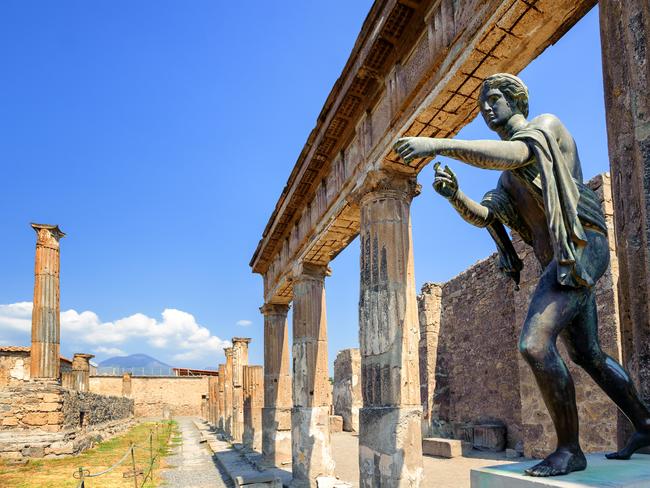
QUICK QUIZ
Describe the ancient Roman city of Pompeii.
Who rediscovered Pompeii in 1748? Why was he there?
What modern-day country is Pompeii in?
How was Mount Vesuvius formed?
Name three types of things uncovered?
at the bottom of the news article including
HEADLINES
Newspaper headlines are designed to gain the audience’s attention to make them want to read the article. They can be a play on words, were they used the words in a different way to make them more interesting, more dramatic or humorous.
Create 3 news headlines for the report from a neighbouring village about the volcano eruption and its effects on the city and citizens of Pompeii.
HAVE YOUR SAY: What would you like to excavate on an archaeological dig?
No one-word answers. Use full sentences to explain your thinking.
There are more activities at the bottom of the news article.
Curriculum Links: History – Ancient world and early civilisations – 60 000BC (BCE) – c. 650AD (CE)
11am, BREAK: 30 minutes
11.30am, TASK 3: MATHEMATICS – CALCUDOKU
Approx: 30 mins
Note to Parents/Guardians:
Calcudoku or KenKen is a grid-based number puzzle that looks like a sudoku grid. It was invented in 2004 by a famous Japanese maths instructor named Tetsuya Miyamoto. It challenges students to practice their basic maths skills while they apply logic and critical thinking skills to the problem.
The Calcudoku games online do not require a log in for students to play.
Activity:
Calcudoku is a maths puzzle. Sometimes it’s called KenKen.
Have a go at solving some Calcudoku puzzles, but first watch this YouTube video which shows you how to solve a Calcudoku puzzle:
Then, follow this link to try some puzzles. Choose your level of difficulty and see how many you can solve.
Curriculum Links: Mathematics – Curriculum Overview
12pm, TASK 4: ENGLISH- OPINIONS
Approx: 40 mins
Note to Parents/Guardians:
This activity focuses on the structure of persuasive writing.
Activity:
Need practice in persuasive writing or essay writing? Try this exercise:
Why is your favourite movie the best? On a separate sheet of paper or on your computer write three arguments:
* My favourite movie is:
* Write 3 bullet points that explain why this movie is better than other movies:
* Write 3 arguments, including supporting evidence and examples, that would convince another person that your movie really is the best one ever made:
Argument 1:
Argument 2:
Argument 3:
Plan a piece of persuasive writing. Your topic is to why your favourite movie is the best movie of all time.
Paragraph One: Start with a statement of your opinion
Paragraph Two: Your first argument with supporting evidence and examples
Paragraph Three: Your second argument with supporting evidence and examples
Paragraph Four: Your third argument with supporting evidence and examples
Last paragraph: Restate your opinion
Curriculum Links: English Literacy – Creating texts
12.40pm, LUNCH: 60 minutes
-Write a letter or design a card to send to one of your friends
-Put on some music and dance!
-Don’t forget your exercise schedule
1.40pm, TASK 5: ENGLISH – READING
Approx: 20 mins
Note to Parents/Guardians: This is a daily activity where everyone stops what they are doing and reads for 20 minutes. It helps if you do this at the same time each day and join in yourself!
You will need:
A book or other material that the student wants to read and can spend at least 20 minutes reading it. It is important that it is something they are interested in and are motivated to read.
Activity:
Find a comfortable place and read for 20 minutes.
2pm, BREAK: 30 minutes
2.30pm, TASK 6: WELLBEING
Approx: 30 mins
Note to Parents/Guardians:
Today’s activity is focused on encouraging students to use reliable sources of information for any questions about COVID-19 that they may have. Having accurate information can help to ease any worries that your child may have.
If your child requires counselling support, contact Kids HelpLine 1800 55 1800
Activity:
Do you have any questions about:
-COVID 19?
-What the rules are where you live
-What is happening as far as your school is concerned right now?
-Anything to do with the situation that we are in right now?
Write them down
One important way to beat stress is to get correct information.
Use these resources to answer the questions that you have written down:
Your school’s website
Your state’s Department of Health website
Your state’s Department of Education website
Curriculum Links: Personal and Social Capability – Self Awareness and Management – Development of Resilience
This content has been taken from the free educational site Kids News, which is providing daily, structured lesson plans to support parents and teachers.
The lessons can be found at kidsnews.com.au/learning-at-home and are all linked to the Australian Curriculum.
The lessons are designed so parents can explain to the child what is expected and then allow the student to do their school work, mostly by themselves.
Originally published as Easy Explainer: How to home school a child in Australia
